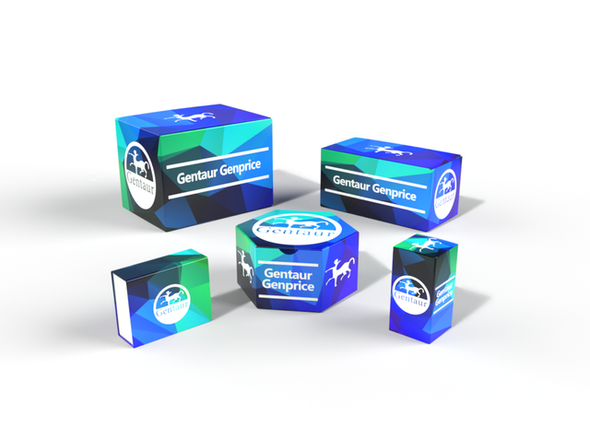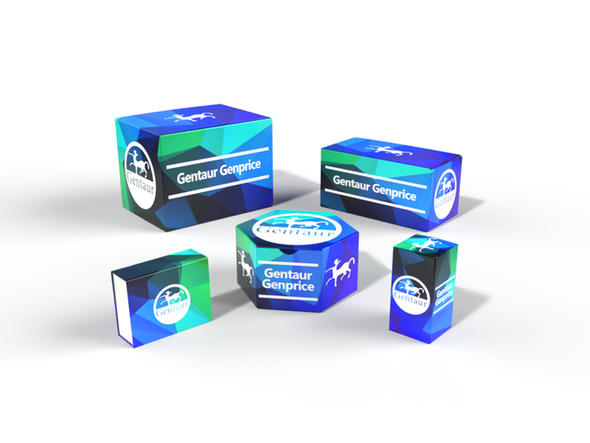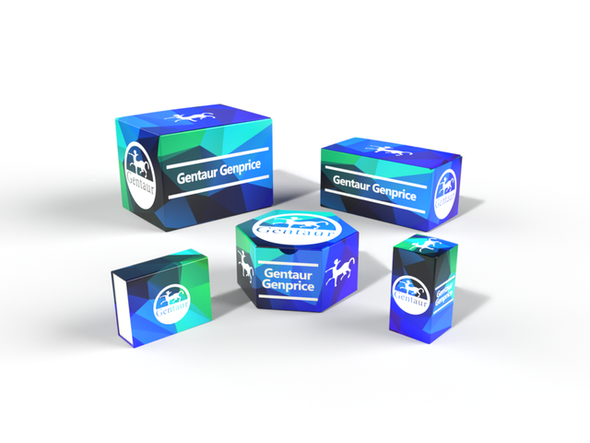Description
S100A9 Antibody [S100A9/1075] | 33-462 | Gentaur UK, US & Europe Distribution
Host: Mouse
Reactivity: Human, Rat
Homology: N/A
Immunogen: Recombinant human protein was used as the immunogen for the S100A9 antibody.
Research Area: Signal Transduction, Cancer
Tested Application: Flow, IF, IHC-P
Application: Flow Cytometry: 0.5-1 ug/million cells in 0.1ml
Immunofluorescence: 0.5-1 ug/ml
Immunohistochemistry (FFPE) : 0.5-1 ug/ml for 30 min at RT (1)
Optimal dilution of the S100A9 antibody should be determined by the researcher.
1. For staining of formalin-fixed, paraffin-embedded tissues, digest with Trypsin at 1mg/ml PBS, 15 min at RT
Specificiy: N/A
Positive Control 1: N/A
Positive Control 2: N/A
Positive Control 3: N/A
Positive Control 4: N/A
Positive Control 5: N/A
Positive Control 6: N/A
Molecular Weight: N/A
Validation: N/A
Isoform: N/A
Purification: Protein G affinity chromatography
Clonality: Monoclonal
Clone: S100A9/1075
Isotype: IgG1, kappa
Conjugate: Unconjugated
Physical State: Liquid
Buffer: PBS with 0.1 mg/ml BSA and 0.05% sodium azide
Concentration: 0.2 mg/mL
Storage Condition: Aliquot and Store at 2-8˚C. Avoid freez-thaw cycles.
Alternate Name: S100A9, S100 calcium binding protein A9, 60B8AG, CAGB, CFAG, CGLB, L1AG, LIAG, MAC387, MIF, MRP14, NIF, P14, S100 calcium binding protein A9 (calgranulin B) , S100 calcium-binding protein A9, S100 calcium-binding protein A9 (calgranulin B) , calgranulin B
User Note: Optimal dilutions for each application to be determined by the researcher
BACKGROUND: This mAb stains the cytoplasm of macrophages and histiocytes in hematopoietic organs, Kupffer's cells of the liver and Langerhan's cells of the skin. It also stains the mantle zone B-lymphocytes of the lymph node and spleen, spermatogonia, and chief cells of the stomach. S100A9 is expressed by macrophages in acutely inflamed tissues and in chronic inflammation. It is detected in peripheral blood leukocytes, in neutrophils and granulocytes. It is present at sites of vascular inflammation. S100A9 is also expressed in epithelial cells constitutively or induced during dermatoses. S100A9 is a Calcium-binding protein. It has antimicrobial activity towards bacteria and fungi. It is important for resistance to invasion by pathogenic bacteria. It up-regulates transcription of genes that are under the control of NF-kappa-B. S100A9 plays a role in the development of endotoxic shock in response to bacterial lipopolysaccharide (LPS) . It promotes tubulin polymerization when unphosphorylated. It also promotes phagocyte migration and infiltration of granulocytes at sites of wounding. It plays a role as a pro-inflammatory mediator in acute and chronic inflammation and up-regulates the release of IL8 and cell-surface expression of ICAM1.

![S100A9 Antibody [S100A9/1075] S100A9 Antibody [S100A9/1075]](https://cdn11.bigcommerce.com/s-1rdwiq712m/images/stencil/608x608/products/483718/489547/gentaur-genprice__26005.1661610467__29809.1661628092__75433.1661676199__77988.1661684280__64362.1661692443__02085.1662049603__45075.1662119302__91744.1662191540__21580.1662291419__52225.1663498757.png?c=1)




